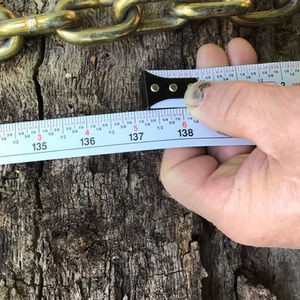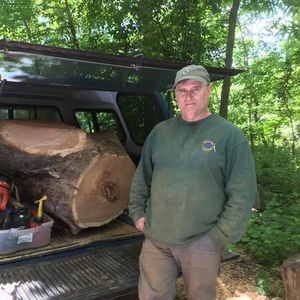304.279.0506
Historic Places
For several years I have spent considerable time and energy harvesting wood from places of historic interest or cultural significance - mostly from right here in Jefferson County but also from interesting places within the region, such as Mount Vernon and Berkeley County's "Boydville," for example - and creating a series of turned items including bowls, vessels, and ink pens celebrating the history of that place, which I briefly document on this site. In most cases the trees are simply mature specimens that have fallen (or been felled for good reason) that happened to grow at a significant place; every now and then, however, I will be lucky enough to acquire wood from trees old enough to have been "witness" trees themselves, and on a few occasions I have worked with wood whose age places it in the realm of the settlement era here in Jefferson County. Pictured below are entries from currently active series; brief descriptions of older series are collected upon an archive page.
Elmwood Cemetery Series
Elmwood Cemetery was officially chartered in 1869 on land purchased incrementally over time, but the oldest part of the Cemetery dates to the 1780 conveyence of one acre to the Elders of the Presbyterian Church by Abraham Shepherd. The earliest grave dates to 1793 and marks the final resting place of Mrs. Sarah Morrow, the mother of James Rumsey's second wife, Mary. Elmwood contains the gravesites of two veterans of the American Revolution, and many other veterans of American wars, including many Civil War combatants. Indeed, on a portion of the Cemetery adjacent to the Methodist Church acquired by the Southern Soldiers Memorial Association in 1868 for Confederate soldiers who died or were mortally wounded at Antietam, are interred the remains of at least 114 such men, many of their identities unknown. One Confederate veteran buried at Elmwood Cemetery is Dr. Joseph McMurran, the first President of Shepherd College. The Lodge House, the residence for the groundskeeper, was built in 1870.
Today, Elmwood Cemetery is operated by a volunteer Board of Directors (see below), who are entrusted with the protection and preservation of this hallowed place, which includes the laborious (and costly) repair of damaged or fallen headstones and, of great significance to me, an ongoing effort to care for the many beautiful trees and shrubs that grace the Cemetery grounds.
Falling Spring State Champion Sugar Maple Series
The large brick house at Falling Spring, just outside Shepherdstown near Morgan's Grove Park, was built in 1837 by Jacob Morgan and is part of the larger complex called Falling Spring, which includes various dependencies and the two famous springs: "Bubbling Spring" and the "Morgan's Spring," over which Jacob's grandfather Richard had built the 1 1/2 storey limestone rubble stone house in 1734 (making it one of the oldest buildings in West Virginia). The complex is rich in historical significance, from settlement days through the Revolution and Civil War (it was the gathering point for the famous "Beeline March" at the start of the American Revolution). Falling Spring is also home to what was officially certified as the largest specimen of Sugar Maple (the official “State Tree,” by the way) in West Virginia. The tree, which in 2011 boasted a circumference at breast height of 199.3" (16.6 feet), a height of 108 feet, and a crown spread of 89.6 feet, had a “Big Tree Points" score of 329.6, making it the official State Champion. In 2023, this graceful giant, estimated to be at least 175 years old – and having lost a large limb in 2017 - simply fell over on a calm evening. It had developed serious structural issues over the years, and the rotting around the roots and base finally proved too much. One wonders what event proved to be the "final straw" - was it the scampering of an animal, or the vibrations from local construction, or some other, deal-breaking, condition? - but of course we'll never know. In any event, the generous proprietors of Falling Spring graciously allowed me to harvest some of the wood for pieces by which to remember her.
Happy Retreat Series
Also known as the Charles Washington House and Mordington, Happy Retreat is the Federal/Greek Revival style home of George Washington’s brother Charles Washington, the founder of Charles Town. The home is set upon a hill that overlooks Charles Town on 12 acres of sloping lawns and woods. While Happy Retreat is generally held to have been constructed by 1780, there is evidence that the land was farmed and occupied well before the Revolutionary War. In modern times, the National Trust for Historic Preservation added Happy Retreat to its growing portfolio of National Treasures. Since 2015, the non-profit Friends of Happy Retreat (FOHR) has partnered with the City of Charles Town to restore and preserve Happy Retreat for public use, to include a 10-acre park and the use of the house and outbuildings as a center for history, heritage tourism, scholarship, culture, and other events. See www.happyretreat.org for more information about what's happening at this historic treasure. And oh by the way, in addition to the wood of the large old English Walnut pictured I have been fortunate to harvest wood from various other trees at Happy Retreat, including Mulberry, Locust, Cherry, and the largest specimen of Northern Spice Bush I have ever seen, so more pieces are definitely coming in this series...
Morgan's Grove Park Series
Morgan's Grove Update: Unfortunately - but inevitably - the massive Chinquapin Oak pictured below, perhaps the grandest of the Park's trees, is starting to fail, requiring the careful balancing of the preservation of the tree with public safety concerns. In early June, 2025, a massive limb came down in a storm, and I was able to harvest some of the wood for turnings. As this grand dame of a specimen continues to fail I will be there, ready to celebrate its life with my work.
Mount Vernon Series

The massive Pecan Tree pictured was planted some time in the 1860s at Historic Mount Vernon, the Virginia home of George Washington, on the southeastern side of the mansion near the Potomac River. Weighing approximately 50 tons, and reaching a height of 145 feet, the tree, while presumed healthy, posed a direct threat to the historic mansion and grounds, and in 2013 the painful but necessary decision was made to have it removed. You can read and view video about the decision to remove the tree and the process HERE. This occurred in early, 2014, and my friends at Local Wood in Berryville, VA, took on the mammoth and all-important task of milling the lumber for use in preservation projects. I made my interest in obtaining cut-offs and scraps resulting from that process well known, and eventually made a donation to "George Washington's Mount Vernon" and, to my great delight, received some pieces from which to craft turnings befitting the magnificent historic character of the great tree. Pieces are labeled "Mount Vernon Pecan" and are numbered; these days most (but not all!) of the "bowl" stock has been used up but it's fair to say that I will be making Mount Vernon ink pens well into my dotage.














































